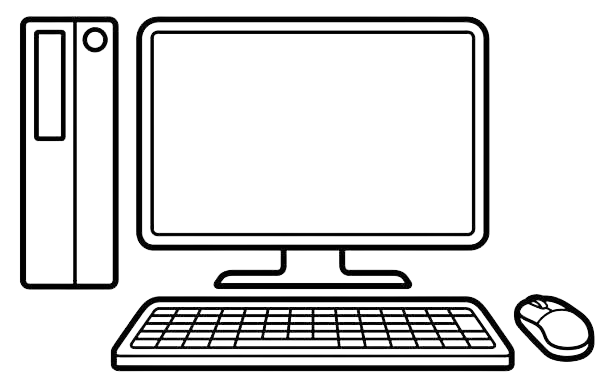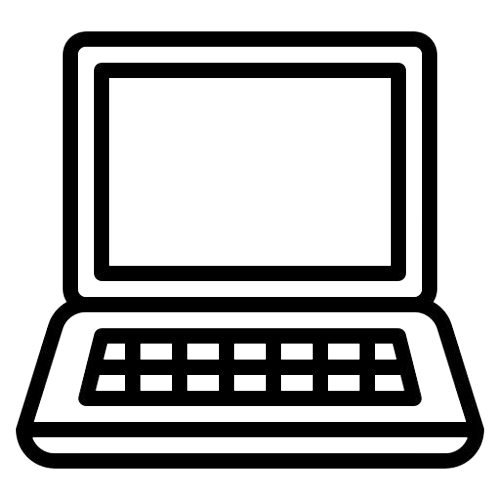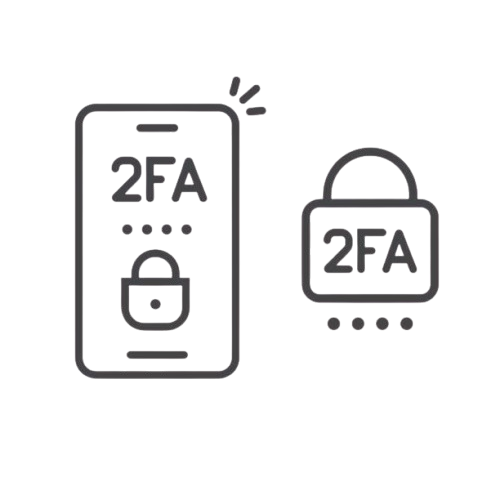My Portfolio
Projects That Deliver Real Impact
Strategic execution across infrastructure, security, and agile transformation.
Led IT initiatives for 15+ years, delivering system upgrades, security rollouts, and agile execution with clarity, collaboration, and measurable impact

Branch Office Thin Client Replacements

- Provided strategic oversight to ensure alignment of the project initiative with enterprise IT strategy, security protocols, and digital workplace objectives
- Defined and documented the overall project scope and success criteria
- Secured cross-functional stakeholder alignment across IT, Facilities, Procurement, and business units to ensure unified execution
- Develop and manage a phased rollout plan for replacing thin clients across 25+ branch and satellite offices, each supporting approximately 10 employees
- Created and regularly updated project plan tracking deliverables including hardware deployment and asset decommissioning
- Scheduled site assessments, hardware deliveries, installations, and asset returns to minimize operational disruption
- Coordinated technician arrival and readiness based on confirmed receipt of materials
- Oversaw vendor contracts and lease agreements to ensure alignment with budget forecasts
- Approved vendor payments in accordance with contractual obligations and project milestones
- Validated site readiness through walkthroughs, ensuring compliance with power, network, and workspace standards
- Identified and allocated necessary accessories, tools, and personnel for successful hardware deployment to support hardware imaging and configuration
- Facilitated ongoing communication between project stakeholders, including local offices, facilities teams, and vendors
- Maintained documentation of asset inventory updates, disposal records, and chain-of-custody logs
- Developed and managed Statements of Work (SOWs) for both national and local vendor engagements, ensuring alignment with project requirements and contractual obligations
- Collaborated with the Legal department to review and secure formal approval of all vendor agreements prior to execution
- Engaged stakeholders across departments to ensure expectations were met and project objectives were clearly communicated
- Collaborated with the Legal department to review and secure formal approval of all vendor agreements prior to execution
Challenged I Faced
Coordinating a phased rollout across more than 25 geographically dispersed branch offices demanded meticulous scheduling and logistical oversight. Each location presented unique constraints, including limited technician availability, varying operational hours, dependencies on local facilities teams, and blackout periods due to regional events. Delays at any single site had the potential to create a cascading effect, impacting the overall project timeline. Furthermore, rescheduling with local vendors in response to such delays sometimes necessitated formal modifications to the Statement of Work (SOW), introducing additional administrative and contractual considerations with varying approval processes.
Securely decommissioning and disposing of legacy devices involved strict adherence to data protection standards (e.g., NIST 800-88, GDPR, CCPA). Ensuring that all devices were properly wiped, documented, and destroyed required rigorous quality control and audit-ready documentation. Any lapse could result in compliance violations or data breaches.
This type of initiative involved multiple internal and external stakeholders, including IT, Finance, Procurement, Facilities, local office managers, and third-party vendors. Aligning expectations, maintaining clear communication, and managing change requests across these groups was complex. Misalignment or lack of engagement from any stakeholder group led to delays or scope creep.
Business Value & Outcomes
- Improved Performance: Faster boot times, better graphics, and smoother user experience
- Enhanced Security: Modern thin clients offer stronger encryption, secure boot, and centralized management
- Scalability: Easily supports remote work and future expansion through VDI/cloud platforms
Branch Office Canon Copier Replacements

- Developed a comprehensive phased rollout plan for copier replacement across all branch offices, minimizing disruption to daily operations
- Defined deliverables including hardware deployment, network integration, asset disposal, and user training
- Scheduled site walkthroughs, equipment deliveries, installations, and decommissioning activities to maintain project timelines
- Coordinated technician availability and site readiness to avoid delays and ensure efficient execution
- Reviewed and terminated legacy copier leases where applicable, aligning transitions with budget forecasts
- Ensured new lease agreements were properly documented and financially scoped
- Managed vendor contracts and approved payments in accordance with project milestones and budget constraints
- Facilitated communication between project stakeholders, including vendors, facilities teams, and office managers
- Maintained documentation of asset inventory updates, lease transitions, and disposal activities
- Engaged stakeholders across departments to ensure expectations were met and project objectives were clearly communicated
- Facilitated training for office staff on new device functionality and ensured ongoing support and maintenance plans were in place
Challenged I Faced
Business Value & Outcomes
- Operational Efficiency: Faster printing, scanning, and copying improves productivity
- Cost Reduction: Lower maintenance and energy costs compared to legacy devices
- Security Enhancement: Secure data disposal and modern authentication features reduce risk
- Sustainability: Energy-efficient devices contribute to environmental goals
- Asset Visibility: Improved tracking and lifecycle management of office equipment
- Compliance Assurance: Meets data protection and disposal standards across all locations
Headset and Camera Deployment

Strategic Oversight
- Align the deployment with organizational goals for remote work enablement, virtual collaboration, and customer service enhancement
- Define project scope, success criteria, and governance structure
- Secure stakeholder alignment across IT, procurement, facilities, and department leads
Procurement & Compatibility Management
- Evaluate headset and camera models for compatibility with existing systems (e.g., laptops, desktops, conferencing platforms)
- Ensure selection meets technical requirements (e.g., USB, Bluetooth, noise cancellation, HD video) and falls within approved budget
- Coordinate with procurement to place orders and track shipments
- Maintain a centralized procurement tracker to monitor quantities, delivery status, and site assignments
Advance Logistics & Installation Scheduling
- Ship equipment and supporting accessories/tools (e.g., USB hubs, mounts, extension cables) to each site in advance
- Confirm receipt and readiness of equipment before scheduling installation
- Coordinate installation services with local IT teams or third-party vendors
- Schedule installations based on site readiness and staff availability to minimize disruption
Site Readiness & Walkthroughs
- Conduct virtual or in-person walkthroughs to validate workspace setup and installation feasibility
- Ensure power and connectivity requirements are met for each device
Asset Management & Documentation
- Log all deployed equipment in the asset management system with serial numbers, user assignments, and locations
- Track returned or unused equipment and coordinate redistribution or secure storage
- Maintain documentation for device setup, troubleshooting, and support contacts
- Developed a comprehensive phased rollout plan for copier replacement across all branch offices, minimizing disruption to daily operations
- Defined deliverables including hardware deployment, network integration, asset disposal, and user training
- Scheduled site walkthroughs, equipment deliveries, installations, and decommissioning activities to maintain project timelines
- Coordinated technician availability and site readiness to avoid delays and ensure efficient execution
- Reviewed and terminated legacy copier leases where applicable, aligning transitions with budget forecasts
- Ensured new lease agreements were properly documented and financially scoped
- Managed vendor contracts and approved payments in accordance with project milestones and budget constraints
- Facilitated communication between project stakeholders, including vendors, facilities teams, and office managers
- Maintained documentation of asset inventory updates, lease transitions, and disposal activities
- Engaged stakeholders across departments to ensure expectations were met and project objectives were clearly communicated
- Facilitated training for office staff on new device functionality and ensured ongoing support and maintenance plans were in place
Challenged I Faced
Business Value & Outcomes
- Enhanced Collaboration: Improves video and audio quality for meetings, training, and customer interactions
- Operational Efficiency: Reduces technical issues and improves user experience with standardized equipment
- Remote Work Enablement: Supports hybrid and remote work models with reliable communication tools
- Customer Experience: Improves professionalism and clarity in client-facing communications
Laptop Refresh, Updates, and New Requests

- Provided strategic oversight top refresh initiative aligned with enterprise IT strategy, security standards, and workforce enablem ensure the laptoent objectives
- Defined project scope and success criteria to guide execution and ensure alignment with organizational priorities
- Secured cross-functional stakeholder engagement across IT, procurement, HR, and departmental leadership to support unified delivery
- Oversaw the full lifecycle of laptop deployment, from procurement and configuration to installation and asset tracking.
- Ensured all project deliverables—including hardware, accessories, documentation, and support—were completed within defined scope parameters.
- Collaborated with CDW to monitor laptop orders, delivery timelines, and quantities, ensuring alignment with procurement schedules
- Tracked inventory status for laptops and peripheral devices (e.g., docking stations, adapters, monitors).
- Maintained a centralized procurement tracker to oversee shipments and site-level assignments.
- Ensured all purchases met budgetary constraints and technical specifications.
- Directed HQ-based configuration and testing of all laptops to ensure standardized imaging, hardware validation, and enterprise software compatibility.
- Verified security settings, encryption protocols, and remote management tools to meet compliance and operational standards
- Documented configuration standards to ensure consistency across all deployed devices.
- Coordinated proof-of-concept (POC) testing for newly acquired laptop models to evaluate performance, compatibility, and user experience
- Collected feedback from pilot users to inform adjustments to procurement and configuration strategies
- Scheduled deployment services based on site readiness and user availability, ensuring efficient resource utilization.
- Managed deployment timelines by coordinating shipment of configured laptops and accessories to branch offices and end users.
- Confirmed receipt and functionality post-deployment to maintain adherence to project schedules.
- Facilitated clear communication across internal teams and external vendors regarding shipment status, deployment schedules, and support procedures.
- Maintained documentation for setup instructions, warranty details, and support contacts to ensure transparency and accessibility
- Mitigated risks related to hardware compatibility and user adoption through POC testing and pilot feedback loops.
- Ensured secure handling and disposal of returned or repurposed devices to prevent data loss or compliance violations.
- Monitored procurement activities to ensure alignment with budget forecasts and cost-efficiency goals.
- Evaluated lifecycle costs and maintenance savings resulting from proactive refresh planning.
- Engaged department leads and end users throughout the deployment process to ensure expectations were met and feedback was incorporated.
- Facilitated training and support to promote adoption and maximize productivity gains from new devices
Challenged I Faced
Business Value & Outcomes
Duo Mobile MFA Implementation

Strategic Oversight
- Align the MFA implementation with enterprise cybersecurity strategy and compliance requirements (e.g., NIST, ISO 27001)
- Define project scope, success criteria, and governance structure
- Secure stakeholder alignment across IT security, infrastructure, HR, and business units
Planning & Execution
- Develop a phased rollout plan for departments, remote users, and high-risk systems
- Coordinate with IT and security teams to integrate Duo Mobile with identity providers (eg, Active Directory, Azure AD, Okta)
- Oversee configuration of authentication policies, device registration, and fallback options
User Enrollment & Support
- Coordinate user onboarding communications and training materials
- Ensure helpdesk readiness to support MFA setup and troubleshooting
- Monitor enrollment progress and escalate issues as needed
Testing & Validation
- Conduct pilot testing with select users and departments
- Validate compatibility with mobile platforms, browsers, and enterprise applications
- Ensure fallback mechanisms (e.g., bypass codes, hardware tokens) are tested and documented
Vendor Coordination
- Liaise with Duo (Cisco) and any third-party integrators for technical support and licensing
- Track licensing usage and ensure alignment with user count and budget
- Manage vendor SLAs and escalation paths
Asset & Inventory Management
- Track any supporting devices (e.g., hardware tokens, mobile devices) issued for MFA
- Update asset management records with serial numbers, user assignments, and device status
- Ensure secure handling and return of unused or decommissioned MFA devices
- Developed a comprehensive phased rollout plan for copier replacement across all branch offices, minimizing disruption to daily operations
- Defined deliverables including hardware deployment, network integration, asset disposal, and user training
- Scheduled site walkthroughs, equipment deliveries, installations, and decommissioning activities to maintain project timelines
- Coordinated technician availability and site readiness to avoid delays and ensure efficient execution
- Reviewed and terminated legacy copier leases where applicable, aligning transitions with budget forecasts
- Ensured new lease agreements were properly documented and financially scoped
- Managed vendor contracts and approved payments in accordance with project milestones and budget constraints
- Facilitated communication between project stakeholders, including vendors, facilities teams, and office managers
- Maintained documentation of asset inventory updates, lease transitions, and disposal activities
- Engaged stakeholders across departments to ensure expectations were met and project objectives were clearly communicated
- Facilitated training for office staff on new device functionality and ensured ongoing support and maintenance plans were in place
Challenged I Faced
Ensuring compliance with internal and external security standards requires meticulous documentation, regular audits, and alignment with regulatory frameworks. Simultaneously, tracking deployment progress and adoption metrics across systems and user groups demands robust reporting tools and coordination, especially when integrating with multiple enterprise applications.
Business Value & Outcomes
Office Transitions & Infrastructure Management
This enterprise-wide initiative involves the strategic closure, relocation, renovation, and setup of office locations across the US and internationally A critical component includes the relocation and setup of IT closets, which requires meticulous planning to ensure continuity of operations, data integrity, and infrastructure readiness

- Detroit, MI
- Phoenix, AZ
- Denver, CO
- Israel (International)
- Milwaukee, WI
- Bergen, NJ
- Atlanta, GA
- Dallas, TX
- HQ (assumed NY/NJ)
- Los Angeles, CA
- Boston, MA
- Chicago, IL
- Tampa, FL
- San Francisco, CA
- Washington, DC
- South River, NJ
- Baltimore, MD
- Livingston, NJ
- Mexico City, Mexico (International)
- Philadelphia, PA
- South River, NJ
- Westchester, NY
- Cleveland, OH
- Palm Beach, FL
- Rockland County, NY
- Denver, CO
- San Francisco, CA
- Phoenix, AZ
Project Management Responsibilities
The Project Management (SPM) leads the planning and execution of all office transitions, focused on IT closet moves and infrastructure readiness
Planning and Assessment
Preparation and Backups
Moving Day Execution
Post-Move Validation
Challenged I Faced
Managing closures, relocations, and renovations across both domestic and international office locations involves intricate scheduling, vendor coordination, and regulatory compliance. Each site may have unique constraints—local laws, building codes, lease agreements, and cultural considerations—that require tailored planning and execution.
Relocating and setting up IT closets is a high-risk activity that demands meticulous planning to avoid service disruptions. Ensuring data integrity, network availability, and infrastructure readiness during transitions—especially across time zones and varying technical environments—can be challenging and requires close collaboration with IT teams and vendors.
With multiple stakeholders involved—facilities, IT, business units, landlords, and external vendors—keeping everyone informed and aligned is critical. Miscommunication or misalignment on timelines, responsibilities, or technical requirements can lead to delays, cost overruns, or operational disruptions.
Business Value & Outcomes
Let’s Build What’s Next
